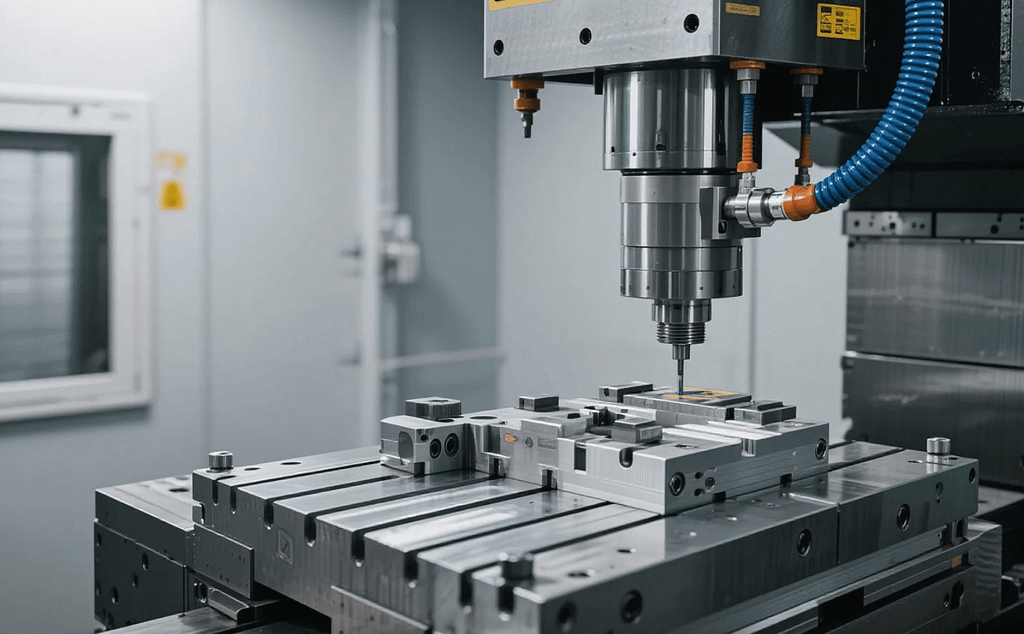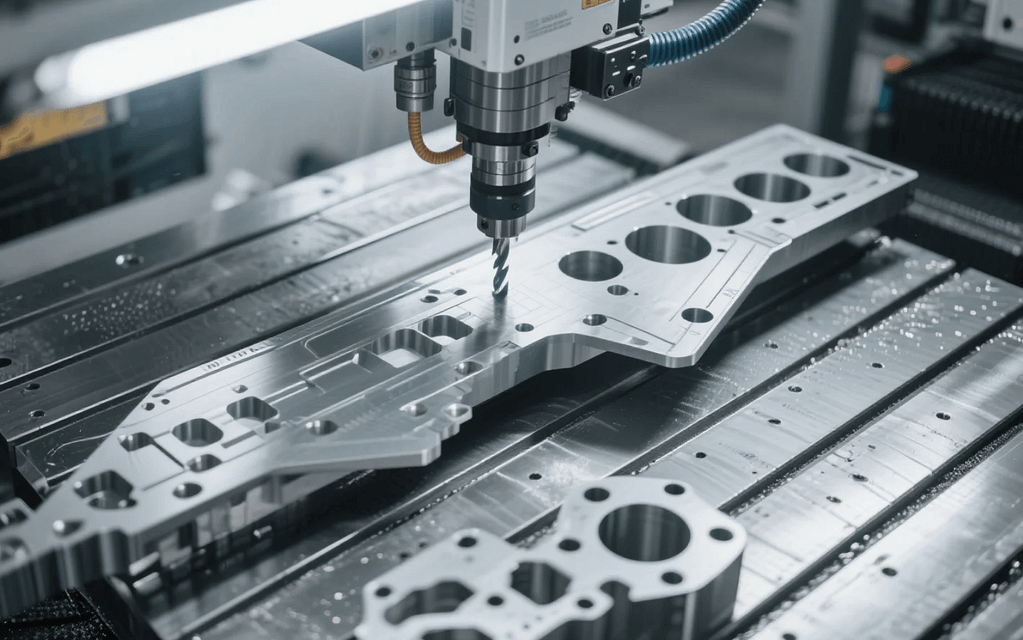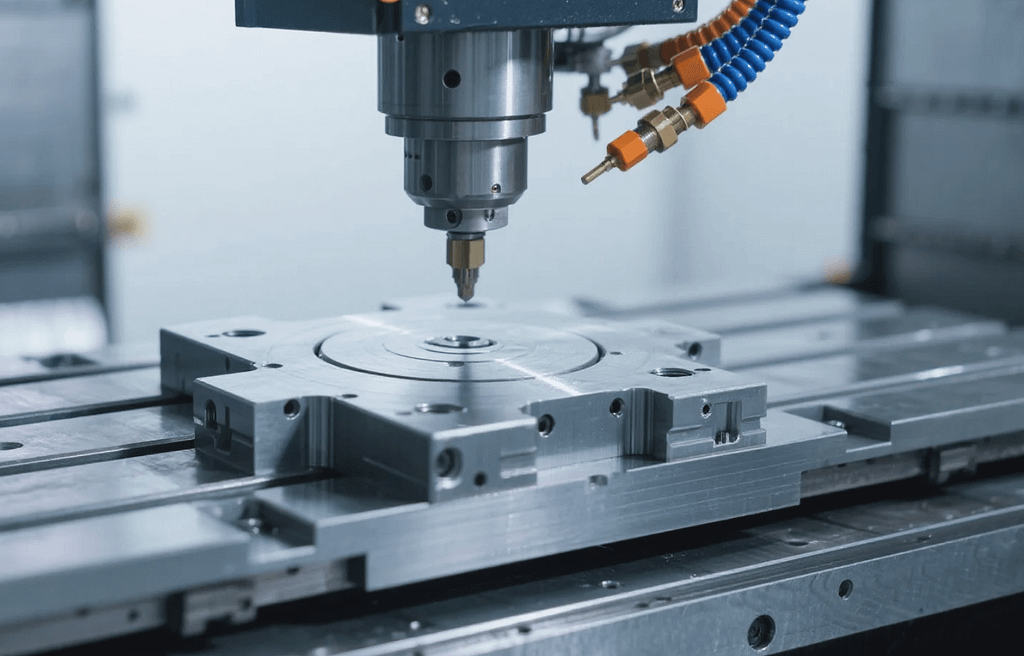The aerospace industry, an unrelenting frontier of innovation and engineering, demands components that perform flawlessly under the most extreme conditions. From the crushing pressures of launch to the vacuum of space, component integrity is not merely a preference; it is a prerequisite for safety and mission success. At the core of achieving this unparalleled reliability is CNC Machining Aerospace. This advanced manufacturing discipline is not just a technology; it is the bedrock of modern flight and space exploration, ensuring that parts meet the stringent, mission-critical specifications necessary for components operating at the very limits of physics and engineering. Consequently, for businesses in need of highly precise, reliable, and complex parts, understanding the profound impact of CNC Machining Aerospace is essential.
The Unwavering Demand for Precision in Aerospace

Aerospace components are typically complex, featuring thin walls, deep pockets, and intricate geometries. Furthermore, they are often produced from materials notoriously difficult to machine. The unforgiving nature of flight means that even minuscule deviations from specifications can have catastrophic consequences. The primary challenge, therefore, lies in consistently achieving micro-level tolerances across a vast array of materials, from high-strength titanium alloys to superalloys like Inconel. Traditional manufacturing methods often struggle with this combination of complexity, material toughness, and non-negotiable precision.
The shift toward lighter, yet stronger, airframes and propulsion systems necessitates tighter control over the entire manufacturing process. As a result, Computer Numerical Control (CNC) machining has become the only viable solution capable of repeatedly executing the highly detailed, multi-axis cuts required for components such as turbine blades, engine casings, structural fittings, and manifold systems. The sophisticated programming inherent in CNC allows for continuous tool path correction and compensation, thereby mitigating the risk of human error and thermal distortion, which are prevalent issues in less automated processes.
Materials Science Meets Machining Excellence

The selection of materials in the aerospace sector is dictated by their performance characteristics—high strength-to-weight ratio, excellent fatigue resistance, and superior thermal stability. Machining these materials, however, presents a significant hurdle.
- Titanium Alloys: Known for their lightweight strength and corrosion resistance, titanium is also notoriously “gummy,” leading to excessive tool wear and heat buildup. CNC Machining Aerospace uses high-pressure coolant delivery and optimized tool geometries, often employing 5-axis or even 7-axis machines, to manage heat and chip evacuation effectively, ensuring the material’s structural integrity is maintained.
- Nickel-Based Superalloys (e.g., Inconel): These alloys retain their strength and stiffness at extremely high temperatures, making them ideal for hot sections of jet engines. Their hardness and work-hardening tendencies, however, make conventional machining nearly impossible. State-of-the-art CNC equipment utilizes specialized ceramic and carbide tooling, along with advanced strategies like trochoidal milling, to overcome these challenges, delivering components with the required smooth surface finishes and minimal residual stress.
- Aluminum Alloys: While easier to machine than titanium, aerospace-grade aluminum still requires high-speed, high-precision CNC processes to create complex structural elements where tight fits and perfect alignment are mandatory.
Consequently, the synergy between advanced materials and high-end CNC technology is what truly defines the superiority of CNC Machining Aerospace. It allows engineers to push the boundaries of design without compromising manufacturability.
The Defining Characteristics of Aerospace CNC Facilities

A facility specializing in CNC Machining Aerospace differentiates itself through stringent quality control and advanced technological infrastructure. It’s not enough to simply own a CNC machine; the environment and the process control are equally vital.
Firstly, Traceability and Documentation are paramount. Every component, from its raw material state through every machining operation, must be meticulously documented. This ensures compliance with regulatory bodies like the FAA (Federal Aviation Administration) and EASA (European Union Aviation Safety Agency). Full material traceability and process validation records are an essential deliverable, providing the customer with absolute assurance of quality.
Secondly, the integration of Multi-Axis and Simultaneous Machining is standard practice. Modern aerospace designs often demand features that can only be accessed by positioning the part and tool simultaneously in five or more axes. This capability significantly reduces setup changes, minimizes accumulated error, and allows for the efficient production of monolithic parts—single components that replace complex assemblies, thus enhancing overall structural integrity and reducing weight.
Finally, Post-Machining Inspection utilizing sophisticated Coordinate Measuring Machines (CMMs) is non-negotiable. These machines, often integrated directly into the manufacturing cell, employ non-contact scanning and high-precision probes to verify dimensional accuracy down to the micron level. This level of quality assurance is critical for components that will be subjected to high-cycle fatigue, such as those in landing gear or propulsion systems.
Applications Across the Precision Spectrum
The impact of CNC Machining Aerospace spans the entire industry, touching commercial, defense, and space sectors.
- Commercial Aviation: Precision-machined engine components, including impellers and blisks (bladed disks), maximize fuel efficiency and thrust. Structural components, such as bulkheads and wing spars, must be machined to exact specifications to ensure aerodynamic performance and load distribution.
- Space Exploration: Satellites, rockets, and landers rely on ultra-high-precision parts for critical subsystems like propulsion nozzles, cryogenic valves, and optical mounts. These parts often operate in extreme temperature gradients and require flawless material integrity.
- Defense Systems: Components for sophisticated navigation systems, guidance controls, and missile airframes demand the highest level of geometric accuracy and material purity, a level that only specialized CNC practices can consistently achieve.
Ultimately, partnering with a provider proficient in CNC Machining Aerospace means gaining access to manufacturing expertise capable of translating the most demanding engineering blueprints into physical reality with consistency and verifiable quality. This highly specialized service is, without a doubt, driving the future of precision manufacturing in the aerospace industry.
Frequently Asked Questions (FAQ)
Q1: What is the main benefit of using 5-axis CNC machining for aerospace components? A: The main benefit is the ability to machine complex contours and features in a single setup. This capability significantly reduces tooling errors, improves component accuracy, and allows for the production of highly efficient, monolithic parts, which enhances structural integrity and minimizes weight.
Q2: Which difficult-to-machine materials are commonly used in aerospace CNC applications? A: Commonly machined aerospace materials include titanium alloys (like Ti-6Al-4V), nickel-based superalloys (such as Inconel 718), and high-strength stainless steels. These materials require specialized tooling, controlled thermal management, and robust CNC strategies due to their high hardness and heat-resistant properties.
Q3: How does traceability work in an aerospace CNC facility? A: Traceability involves maintaining a detailed, verifiable record of a component throughout its lifecycle. This includes tracking the raw material lot, all performed machining operations, tool changes, inspection data (CMM reports), and the personnel involved. This stringent process ensures regulatory compliance and provides a full audit trail for mission-critical parts.